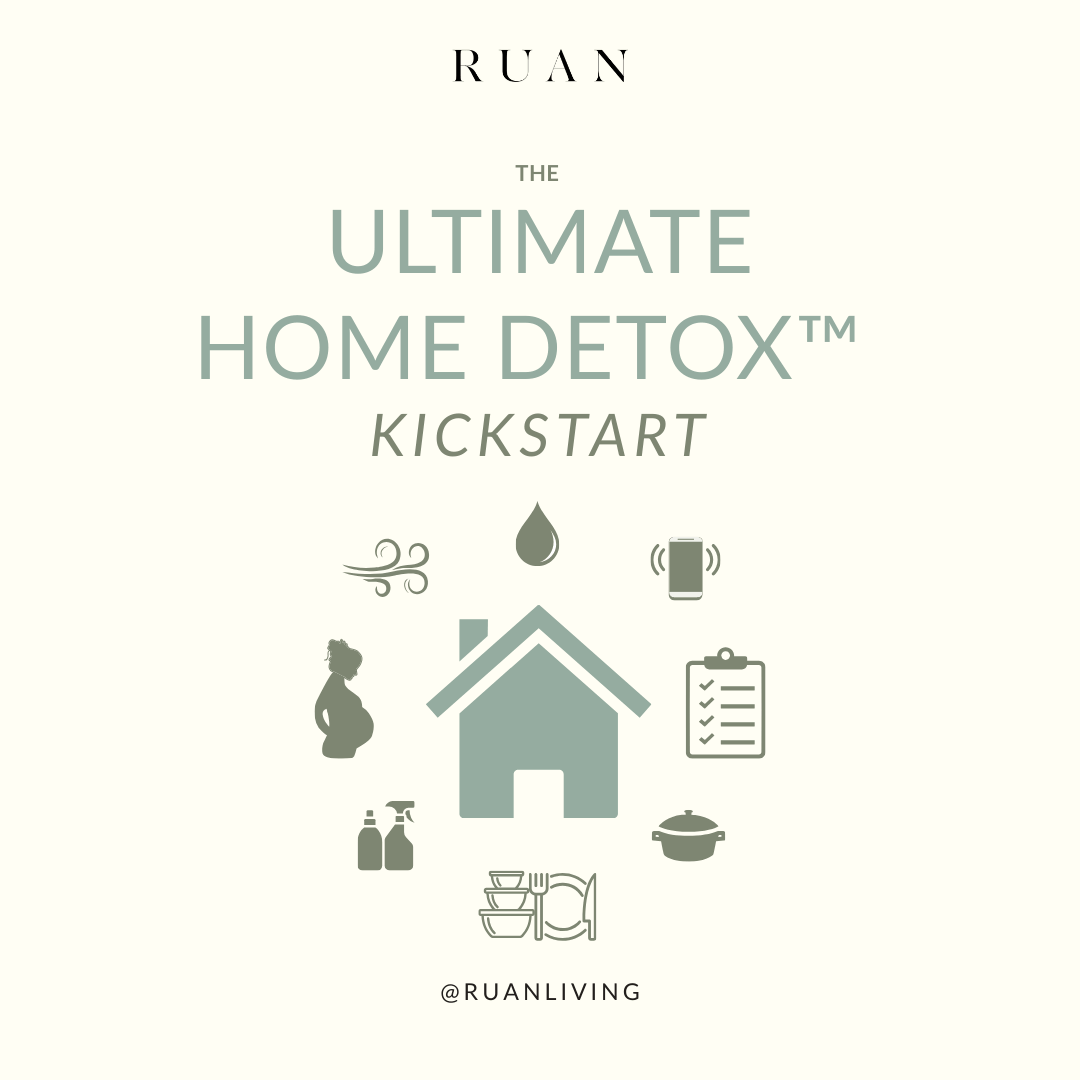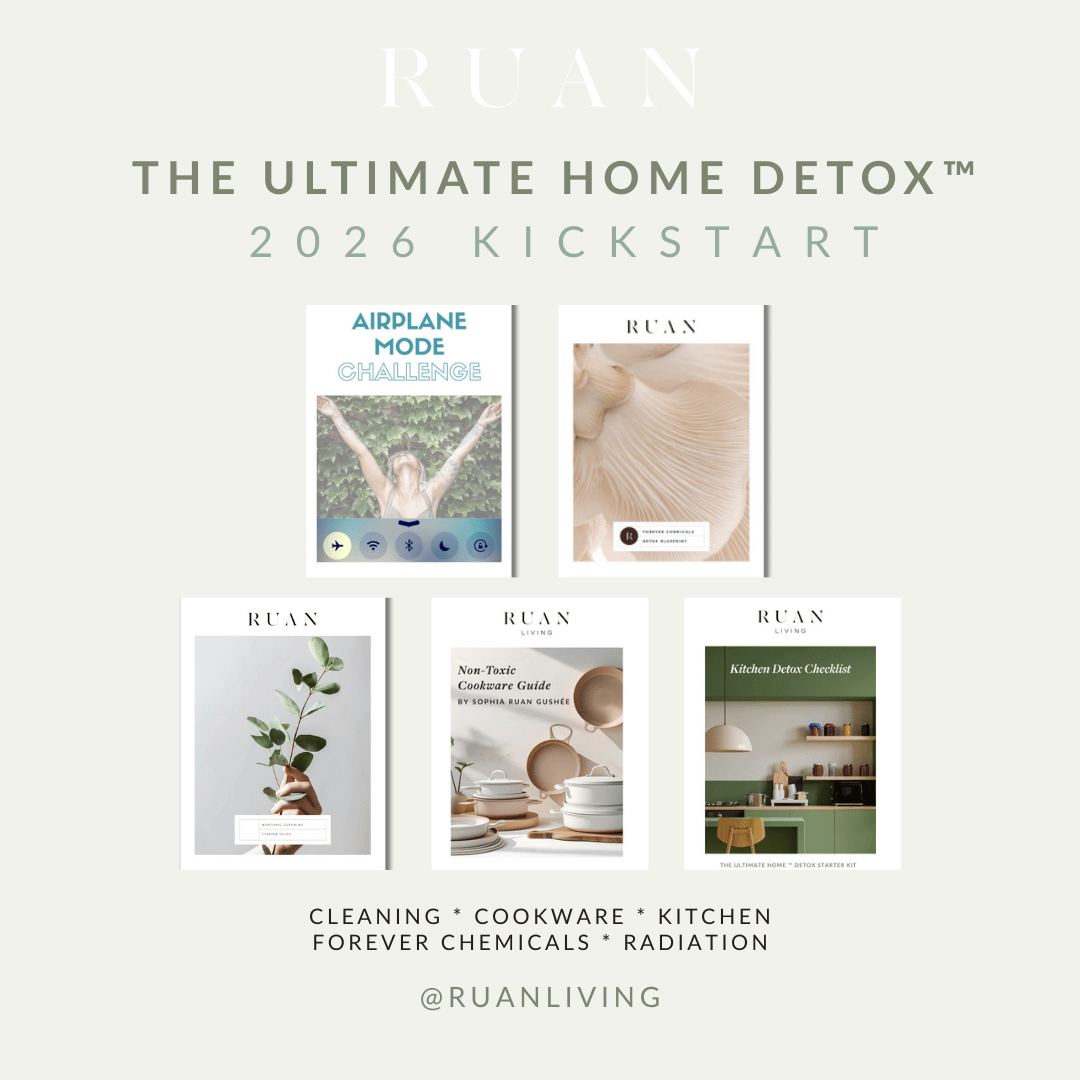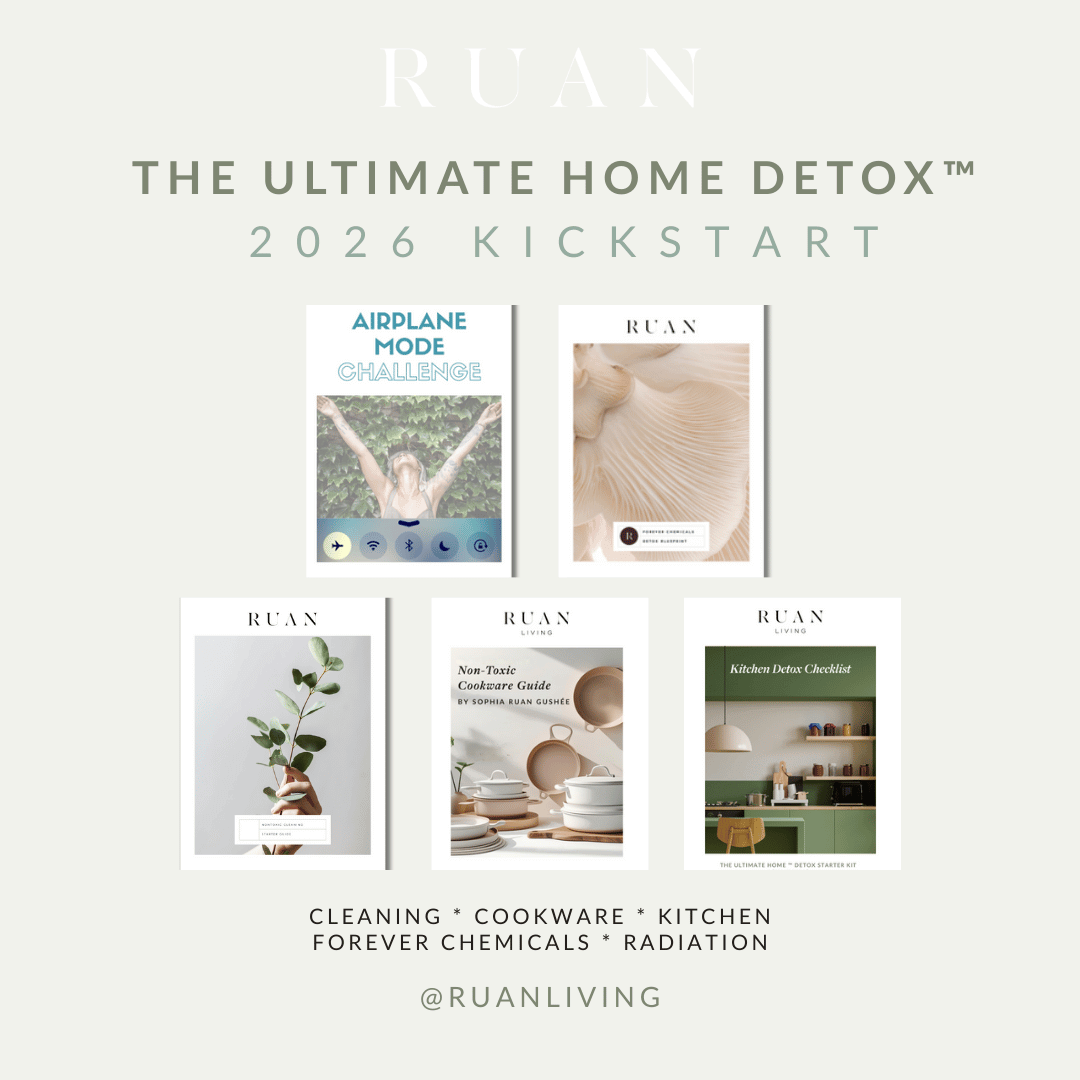
Non-Toxic Gift Packaging Tips To Protect Your Body & Home
Dec 12, 2023by Sophia Ruan Gushée. Updated December 19, 2023
Did you know that how we wrap our gifts can make a big difference in the health of our homes, bodies, and planet? Non-toxic gift packaging is also eco-friendly gift wrapping. This holiday season is an excellent time to choose sustainable gift-wrapping approaches that are safer for both your inner and outer ecosystems!
In this article, you'll learn which gift-wrapping paper and decorative elements can expose you and your loved ones to toxic compounds. Most importantly, however, you'll learn how to choose gift wrapping that is both practically nontoxic and eco-friendly.
Why Choose Non-Toxic Gift Packaging?
Studies in the 1970s found too many toxic compounds—including neurotoxins—in gift-wrapping materials. One that was described in the 1979 article "Colored Gift Wrapping Papers as a Potential Source of Toxic Metals" in the International Journal of Environmental Analytical Chemistry found the following toxic compounds in over a dozen samples of gift-wrapping paper that were tested:
- chromium
- copper
- iron
- manganese
- molybdenum
- nickel
- lead
- zinc
Many of the tested gift-wrapping papers contained high levels of lead and chromium, which is especially risky around young kids who may chew paper because all detectable levels of lead have been found to be damaging to the developing brain. A 1978 article titled "Gift Wrap Termed Toxic" by Joanne Omang in the Washington Post reported that a child eating a 2 1/2 inch piece of the paper could be diagnosed as having lead poisoning, according to Dr. Sidney A. Katz, a Rutgers University chemist.
There is no safe level of lead in the body. Children under 6 years old are the most vulnerable because their bodies are rapidly growing and developing. Symptoms may not be present immediately, but exposure to even low amounts of lead can damage the brain and nervous system. Long-term effects on learning, hearing, attention, and behavior can occur.
In pregnant women who have been exposed, lead can be released from the bones and cross the placenta. This can impact the fetus's nervous system and growth. There is also a risk of premature delivery or miscarriage.
—"Take the lead on lead poisoning"; by Marissa Hauptman, MD, MPH, and Ryan Brewster, MD; February 10, 2022; Harvard Health Publishing, Harvard Medical School
So, 45 years later, gift-wrapping paper must be safer, right?
Yes and no.
How Safe Are Gift Wrapping Materials Made Outside The United States?
While the United States has learned from its past (heavy metals used to be more prevalent in gift wrapping paper), Americans are not necessarily safer from gift wrapping paper today. The toxicity in gift wrapping paper depends on which chemicals and heavy metals are involved in creating the gift wrapping paper and where the gift wrapping paper is made.
Dr. Katz told NPR in 2008 that gift-wrapping papers manufactured with American pigments are "probably OK." However, it's hard to know if pigments used by non-U.S. manufacturers are safe.
Based on a 2020 evaluation of 59 countries, China, the world's largest manufacturer of wrapping paper, produced 250% more wrapping paper than the world's second-largest manufacturer, the U.S., as reported by HelgiLibrary. We humans use a lot of gift-wrapping materials so gift-wrapping materials are a meaningful source of environmental and public health pollution!
Looking at our appetite for gift-wrapping materials through a financial perspective: In 2022, the global gift-wrapping products market size was valued at USD 17.84 billion. It is estimated to grow at a CAGR of 6.7% during the forecast period (2023–2031) to $31.97 billion by 2031, according to Straits Research.

Eco-Friendly Gift Wrapping
In addition to your toxic exposures, you also want to consider our accumulating plastic garbage patches.
Waste is significantly increased during the holiday season. Americans alone create 25% more waste during the weeks from Thanksgiving to New Year’s compared to the rest of the year. In fact, Americans produce an extra 1 million tonnes within a week during this time, according to a 2021 Economist article "Have yourself a merry little (low-waste) Christmas."
What's worse: Gift wrapping paper, ribbons, bows, holiday cards, and other decorative elements too often pollute our bodies and ecosystems with microplastics and heavy metals. The California Poison Control System warns that "Most wrapping paper and ribbons are non-toxic, but foil and colored gift wrap may contain lead. Don’t let babies or pets chew on foil wrapping paper. Do not throw this paper into the fireplace either. Lead can still be found in new and used children’s products, like toys, backpacks, lunch boxes, and jewelry."
The tips below will help you choose sustainable gift wrapping—whether you like the natural gift wrapping aesthetic and want handmade gift wrapping ideas, DIY gift wrapping; or you just want to avoid the worst offenders when shopping for storebought, "off-the-shelf" sustainable gift wrapping.
Handmade Gift Wrapping Ideas—Including Reusable Gift Wrapping
The most environmentally friendly gift wrapping uses materials that you already have. For example, you can reuse wrapping materials or bags that have been given to you, arts and crafts materials, or fabric or clothing that you don't mind using for cloth wrapping.
- Use tea towels that can be re-used by the recipient.
- Reuse paper bags or brown bags from the grocery store, and dress the package up with a piece of recycled twine, and a sprig of rosemary, cinnamon, or pine. Alternatively, brown or single-color craft paper can be a great option and is easier to recycle.
- Reuse cookie tins or glass jars, and dress them up with a piece of twine and a flower. Shop for recycled holiday cards.
- Shop for wrapping paper or bags that do not have that thick, plastic sheen, metallic dressings, or glitter on them.
- Shop for biodegradable gift wraps.
Recycling Tips
Avoid adding gift-wrapping materials with the following to your recycling bin. Doing so can make the entire bin unrecyclable. Anything with:
- Metallic
- Glitter including glitter on holiday cards
- Texture to it
- Decorative ribbons and bows
- Gloss
Recyclable Gift Wrap
Additional tips to identify gift wrapping paper that can be recycled:
- Remember that if you have recycled paper, it is more likely to be recyclable again.
- Scrunch the paper into a ball. If it stays scrunched, it can probably be recycled, the BBC reported in 2021.

Untreated kraft paper is an excellent option for non-toxic gift packaging that is also environmentally friendly gift wrapping. This natural gift wrapping can also be zero waste gift wrapping when you reuse materials that you already have.
Non-Toxic Gift Packaging Tips
Signals that there may be toxic chemicals or heavy metals in your gift wrapping materials include:
- Foil and color. Foil and colored gift wrap may contain lead. In the past, lead and cadmium were used in paint to produce certain colors, especially reds and yellows. Today, how safe are the alternative formulas? Has anyone tested it?
- Glossy gift wrapping paper. The gloss is often created with a plastic, waxy, or metallic coating.
- Glitter. Often made of microplastics, glitter ends up in our oceans and waterways and can harm aquatic species, marine mammals, fish, and birds. In addition to gift wrapping materials, glitter in our clothing, hair, dishes, etc. eventually ends up in our bodies of water too. For these reasons, the Oregon Environmental Council finds glitter to be the most harmful part of gift-wrapping materials.
Sustainable Gift Wrapping Tips
Sustainable gift wrapping tips include simple behaviors that should become routine practice. When handling gift wrapping paper, practice the following:
- Don't let anyone, like children, chew on wrapping paper.
- Develop a habit of washing your hands after handling wrapping paper.
- Do not burn gift wrapping paper in a fireplace. Burning wrapping paper can contaminate your indoor air with toxic chemicals and heavy metals that you can inhale.
- Do not compost conventional gift wrapping paper.
Summary
Rest assured that the most nontoxic gift packaging is also eco-friendly gift wrapping. Follow the tips above to gift not just your gift recipient but also the health of you, your home, and our planet! Very important: Please talk about safer gift wrapping materials and tips to decrease your toxic exposures from gift wrapping materials. This will raise other people's awareness and grow the conscious consumer community along with more people aiming for zero waste gift wrapping!
You may also be interested in...
- Ruan Living's Forever Chemicals Detox Crash Course
- Ruan Living's Practical Nontoxic Living podcast
- Ruan Living's 40-Day Home Detox



